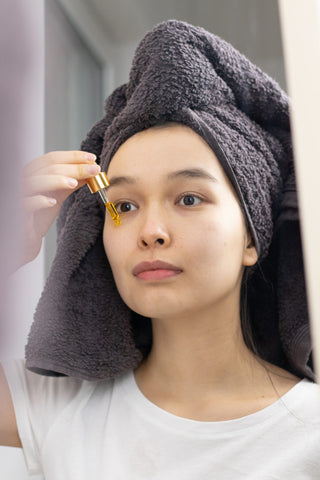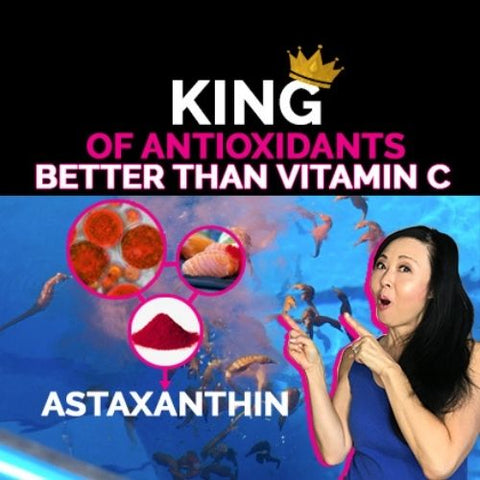 Click on photo for video
Click on photo for videoHigh Spf Sunscreens may not offer you as high sun protection factors as you think they are.
If you have had skin cancer or a family history of skin cancer, then it is likely that you are using sunscreen on a regular basis. The chances of you using a higher SPF sunscreen is even more likely.
In theory, many people believe that using a sunscreen with a high spf ( in this blog post, “high spf” will refer to an SPF of OVER 50) would give longer sun protection before getting a sunburn.
Studies have shown that people who use a higher spf tend to stay in the sun longer than people who used a lower spf.
In the real world, the way most sunscreens are used, these products would be less effective than a t shirt, which generally have an spf of 5.
Not interested in Chemical based sunscreens?
Here are two types of mineral based sunscreens.
One for Hydrating, addresses Lightening and Brightening and Anti Aging Peptides
One for Oily Free , non-comedogenic, addresses lightening dark spots
High SPF Sunscreens Changes Peoples Behavior in the Sun
Many studies have also shown that most people don’t use sunscreens properly and as a result in unexpected sunburn.
People use less sunscreen than needed and stay in the sun LONGER when the SPF is higher.
For example, Philippe Autier, a scientist formerly with the World Health Organization International Agency for Research on Cancer has led numerous studies on “sunbathers” and concluded that high SPF products increase “profound changes in sun behavior”.
High SPF Products May Not Really Be High SPF
Proctor and Gamble tested a competitors SPF 100 product in three different labs. The results varied between 37 SPF all the way to 75 SPF.
The small differences in application thickness and light transmissions yielded such dramatic differences in test results, they concluded in the real world, the differences would also be dramatic in High Spf sunscreens.
High SPF Sunscreens Provides just a tad bit better Sun Protection:
High SPF Sunscreens provides just a tad bit better sun protection when properly applied . For example, a sunscreen with a SPF 50 blocks out 98% of UV B rays and a sunscreen with a SPF of 100 blocks out 99% of of UV B rays.
When you see a higher SPF, it is also more likely that the higher SPF sunscreen also may contain more chemicals to help block out the UV rays.
High SPF sunscreens are NOT completely protecting as most would believe. Most high SPF sunscreens are designed to block out UV B (burning rays), which is the main cause of sunburn and non-melanoma skin cancers.
UV A rays (aging rays) are related to higher risk of developing into Melanoma. UV A rays penetrate deeper into the skin and more difficult to block with sunscreen ingredients approved by the FDA.
High SPF Sunscreen Fare worse in balancing out UV A and UV B protection
High SPF sunscreens are better at protecting from sunburn which is the UV B protection NOT the UV A protection.
Obviously an ideal sunscreen would be to offer equal levels of protection of BOTH UV A and UV B .
Beach and Sports sunscreens usually are more commonly known to have higher SPF.
In the US, the FDA is still testing out ingredients for UVA protection. Europe is know to have sunscreens that have ingredients that offer more UV A protection . However, most of these ingredients are known to degrade very quickly so the FDA are still undergoing more testing with these ingredients.
For more information on what is happening with sunscreens in the US:
Sunscreens-What the Beauty Industry is NOT Telling You
5 Warning Signs You Have Skin Cancer
Margaret L. Kripke. The ABCs of Sunscreen Protection Factors. Journal of Investigative Dermatology, 2003, 121(1), VII–VIII
Rachel Haywood et al., Measuring Sunscreen Protection Against Solar-Simulated Radiation-Induced Structural Radical Damage to Skin Using ESR/Spin Trapping: Development of an Ex Vivo Test Method. Free Radical Research, 2012, 46(3), 265–275.
Uli Osterwalder et al., The Long Way Towards The Ideal Sunscreen – Where We Stand and What Still Needs to be Done. Photochemical & Photobiological Sciences, 2010, 9(4), 470–481.
Hao Ou-Yang et al. High-SPF sunscreens (SPF ≥ 70) May Provide Ultraviolet Protection Above Minimal Recommended Levels by Adequately Compensating for Lower Sunscreen User Application Amounts. Journal of the American Academy of Dermatology, 2012, 67(6), 1220–1227.
Wei Liu et al. Sunburn Protection as a Function of Sunscreen Application Thickness Differs Between High and Low SPFs. Photodermatology, Photoimmunology & Photomedicine, 2012, 28(3), 120–126.
Procter & Gamble Company, Comments on the Revised Effectiveness Determination; Sunscreen Drug Prodcts for Over-the-Counter Human Use (Docket No. FDA-1978-N-0018, RIN 0910-AF43).
Joseph W Stanfield et al., Multi-laboratory validation of Very High Sun Protection Factor Values. Photodermatology, Photoimmunology & Photomedicine, 2011, 27(1), 30–34.
Celine Couteau et al., Effect of the Product Type, of the Amount of Applied Sunscreen Product and the Level of Protection in the UVB Range on the Level of Protection Achieved in the UVA Range. International Journal of Pharmaceutics, 2016, 500(1-2), 210–216.
Rachel Novick et al., Factors that Influence Sunscreen Application Thickness and Potential Preservative Exposure. Photodermatology, Photoimmunology & Photomedicine, 2015, 31(4), 212–223.




